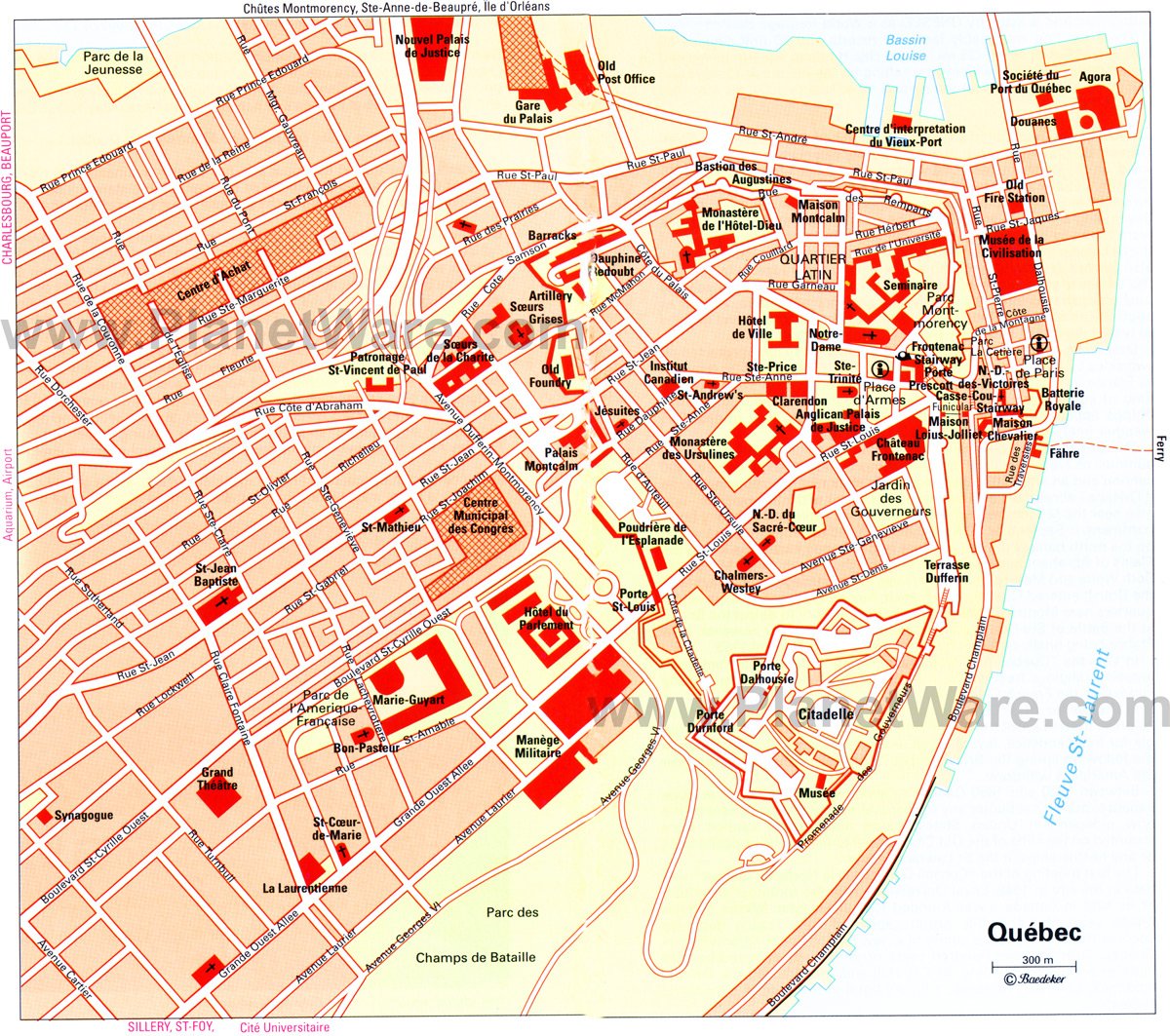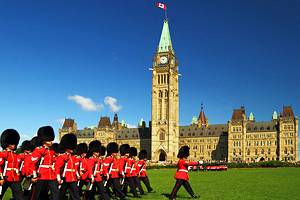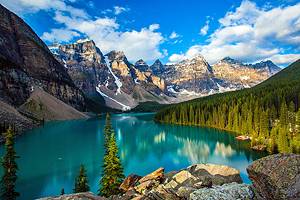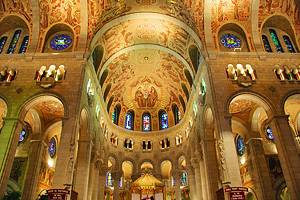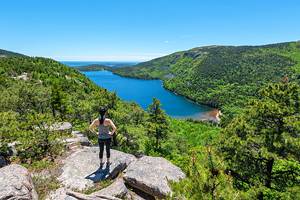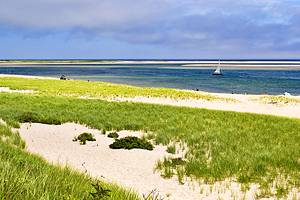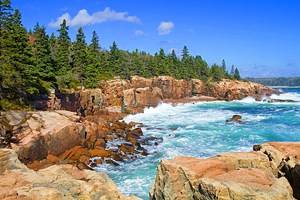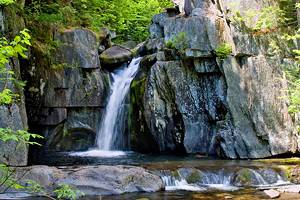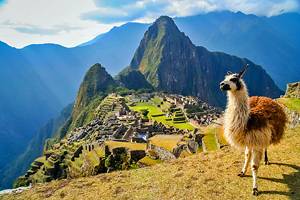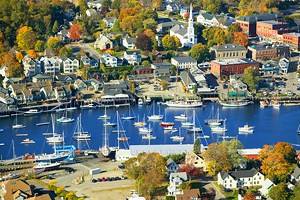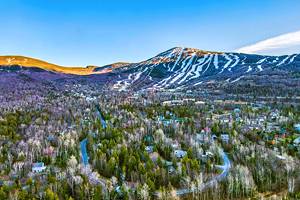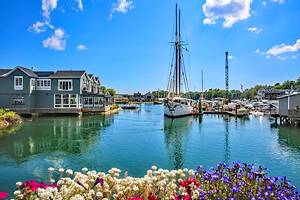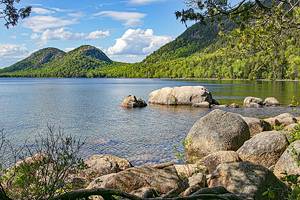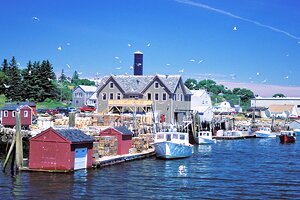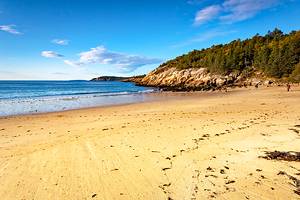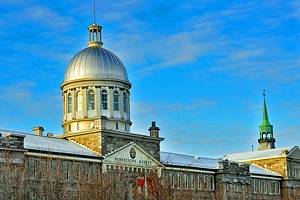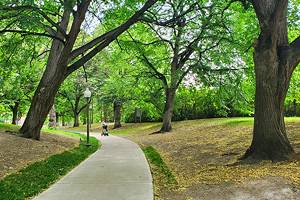Attractions & Places to Visit in Québec City
The only walled city in North America and a UNESCO World Heritage Site, French-speaking Québec City has a strategic location atop steep cliffs that overlook the St. Lawrence River. Founded in 1608 as a fur trading colony at present-day Place Royale, it quickly became an administrative center and today is the capital of Québec Province and one of the most beautiful cities in Canada.
The Upper Town, also known as Haute-Ville, was originally developed for its military advantage and contains the defensive Citadel, as well as some of the city's most iconic landmarks, like the Château Frontenac and City Fortifications.
The Lower Town (or Basse-Ville) is where the original settlement was located and is known for its picturesque, narrow streets and historic, stone buildings. This is where you'll find Place Royale and the Quartier Petit Champlain. Sets of stairs and a number of steep streets lead down from the Upper Town to the Lower Town, making the entire area easy to explore on foot. At the base is the St. Lawrence River, making the setting that much more picturesque.
Along here is access to the Québec-Levis Ferry at Vieux Port (Old Port), and there are many tourist attractions, including the Musée de la civilisation. The upper and lower districts are connected by winding streets, a few steep staircases, and the funiculaire.
Plan your next getaway with our list of tourist attractions in Québec City.
Wander through Place Royale
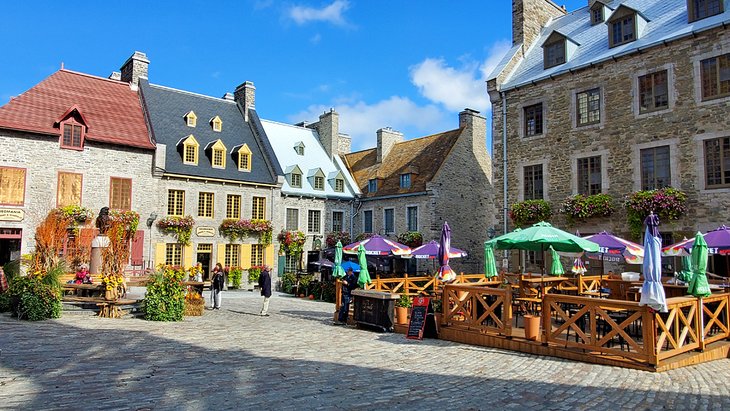
This is tourist central in Québec, both for the history and the modern-day ambience that comes with the restaurants, patios, and shops that now fill the historic structures.
Place Royale stands on the site of Québec's actual foundation, the spot where, in 1608, Samuel de Champlain erected a fur trading post that soon grew into the capital of French America. Named in honor of Louis XIV whose bust adorns it, Place Royale is the largest surviving ensemble of 17th- and 18th-century buildings in North America.
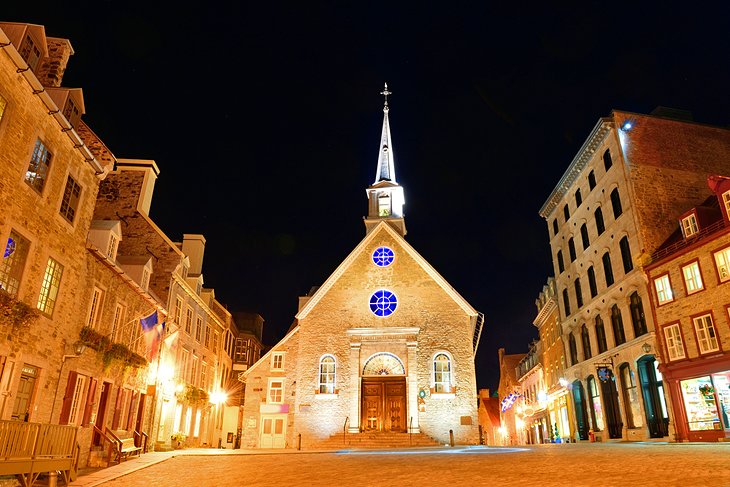
The pretty stone church, Notre-Dame des Victoires, faces a cobbled square, along with Maison Chevalier of the Musée de la Civilisation. Adjacent to Place Royale, facing out over the river and encircled by stout walls and palisades, the little Batterie Royale was constructed in 1691.
In summer, the area is home to outdoor dining areas. In winter, the snow transforms the old streets and stone buildings into a postcard-perfect scene. This is a beautiful area to wander through in the day or evening and at any time of year.
Explore La Citadelle de Québec
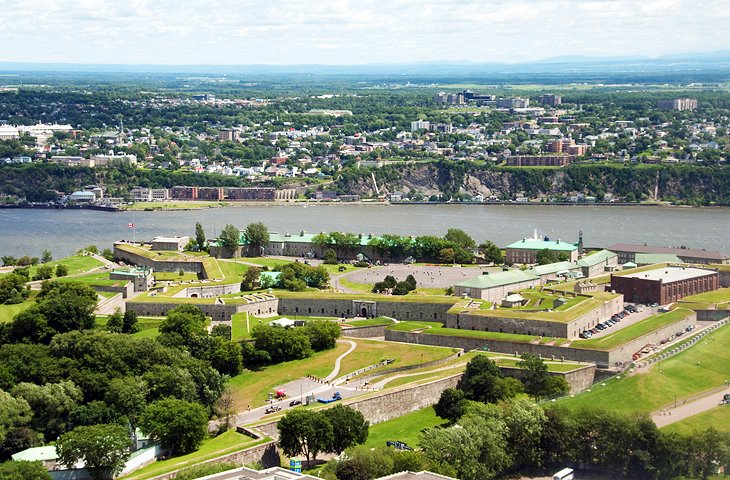
Thrusting upwards from the west and facing the St. Lawrence River, Cap Diamant reaches a height of 100 meters and commands an extensive and varied panorama. Sitting atop this is Québec's star-shaped Citadel, a massive fortress protected by thick walls, ramparts, and ditches that was built in 1832. Still an active military post, the Citadel is used as military quarters for generals, officers, and servicemen, as well as the summer residence of the Governor General of Canada.
This is also the headquarters of the 22nd Canadian Regiment, which formed at the beginning of the First World War and boasts a distinguished record, including action at the Battle of the Somme and, much later, in the Korean War.
Summer visitors can watch the Changing of the Guard ceremony each morning, and the military museum, located in the mid-18th-century powder magazine in the southern corner of the Citadel, is open year-round.
From the far end of the boardwalk in front of the Château Frontenac, a set of stairs leads up to the Citadel and the Plains of Abraham.
Address: 1 Côte de la Citadelle, Québec City
Official site: http://www.lacitadelle.qc.ca
See the Plains of Abraham (Champs de Bataille)
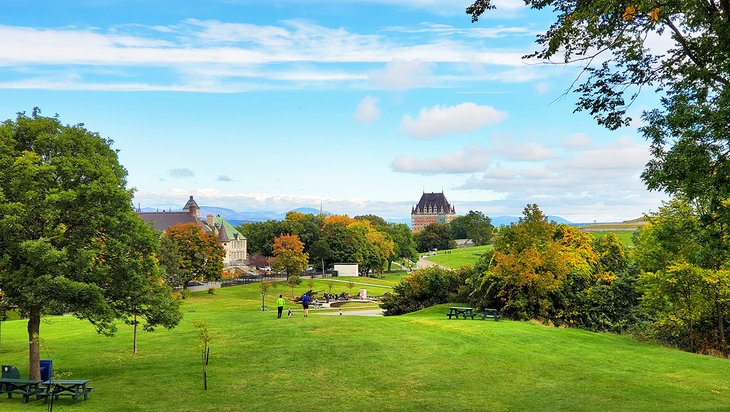
Outside the city walls, to the west of the Citadel, stretches the green expanse known as the Plains of Abraham (Champs de Bataille), where in 1759 the British, led by General Wolfe, fought the French under Montcalm and won. Exhibits retell the tumultuous history of how Québec City resisted and then fell to the British.
The park is also home to the remains of two Martello towers, later additions to Québec's fortifications. Begun in the late 1930s, the Joan of Arc Garden, designed by Louis Perron, has a fabulous display of flowers from spring until fall.
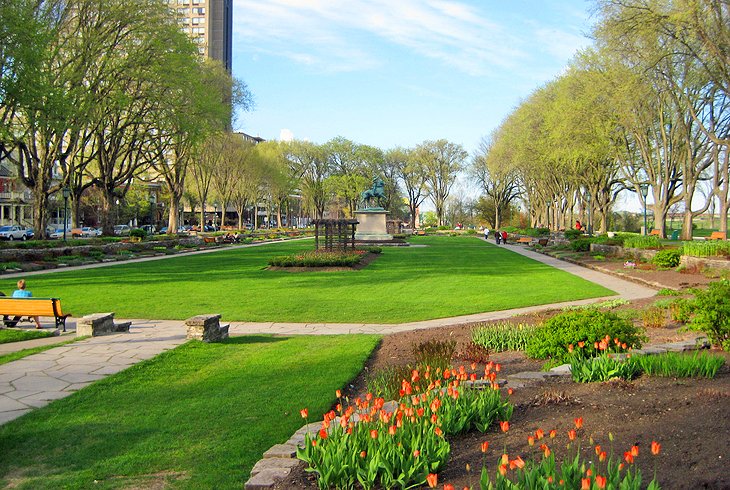
Families visiting with children will find interactive exhibits at the museum, which encourage younger visitors to engage with history, and young children will have fun with the family "treasure hunt," which encourages exploration and discovery within the park.
Address: 835 Avenue Wilfrid-Laurier, Québec City
Official site: http://www.ccbn-nbc.gc.ca
Stroll through Quartier Petit Champlain
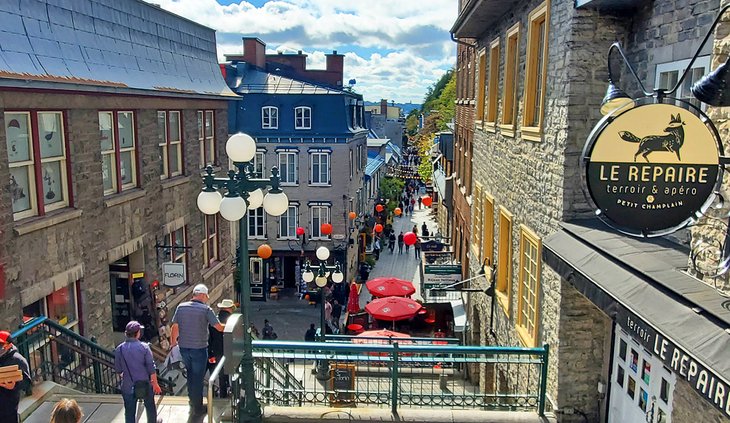
Once the bustling capital of New France, the Quartier Petit Champlain is arguably the most beautiful area of the city. Wandering the narrow streets that lace between the historic buildings makes you feel like you are in the heart of an old European City.
The stone structures that line the pedestrian-only streets now house a wide variety of shops, services, and restaurants. This the perfect place to visit for strolling and meandering, and it's a truly lovely area year-round.
Tourists will find artisan boutiques, Québec-cuisine restaurants and bistros, art galleries, and a generous assortment of sweets shops offering everything from handcrafted fudge and nougat to a stylish Crêperie. Clothing boutiques here offer unique items for sale, from stores that offer only alpaca products to those showing the latest trends.
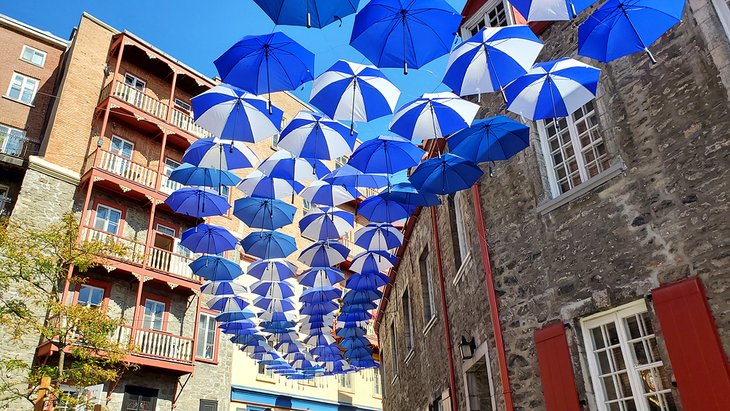
Photographers will also find interesting sites in the Quartier Petit-Champlain. The umbrella-covered lane (Rue du Cul de Sac) offers a colorful spectacle, as well as some respite from the sun or rain. While you're here, pop into La Fudgerie for a treat. Watch for the large trompe-l'oeil mural (Fresque du Petit-Champlain) at the far end of rue du Petit-Champlain, which gives a glimpse into the city's history.
Official site: http://www.quartierpetitchamplain.com
Visit Musée de la civilisation
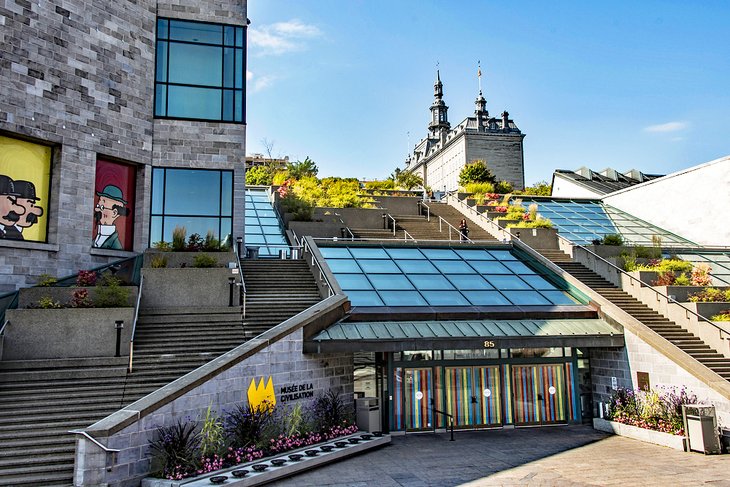
The Musée de la civilisation delves into the many facets of human history and the establishment of French America.. The main museum, located in Basse-Ville near the Old Port, was built to designs by the well-known architect Moshe Safdie and is of great architectural interest.
The permanent collection draws from civilizations around the world, as well as exploring the Québec experience, through engaging and often interactive exhibits.
The Musée de la civilisation also has exhibits at Place Royale, where Samuel de Champlain founded Québec, the first permanent French settlement in North America.
Through a blend of history, sociology, and archaeology, the museum offers a comprehensive look at the cultures that have shaped Québec.
Address: 85 Rue Dalhousie, Québec City
Official site: https://www.mcq.org/fr/
Château Frontenac
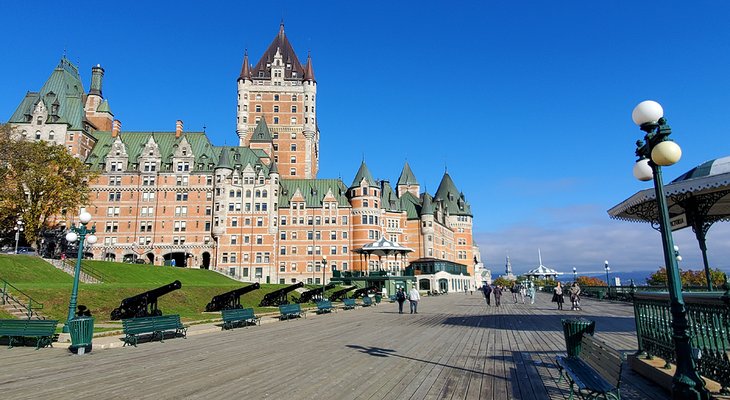
Constructed for the Canadian Pacific Railway in 1894, the grand Fairmont Le Château Frontenac is now one of the city's most prominent landmarks and esteemed hotels. This historic property can be seen from miles away and is especially impressive at night.
In front of the hotel, Terrasse Dufferin affords stunning views northwards to the Laurentians, and the Promenade des Gouverneurs leads southwards toward the Citadel and Plains of Abraham. This elevated vantage was the original site of Fort St.-Louis, the governor's residence in colonial times. Tourists can see the ruins underneath the promenade.
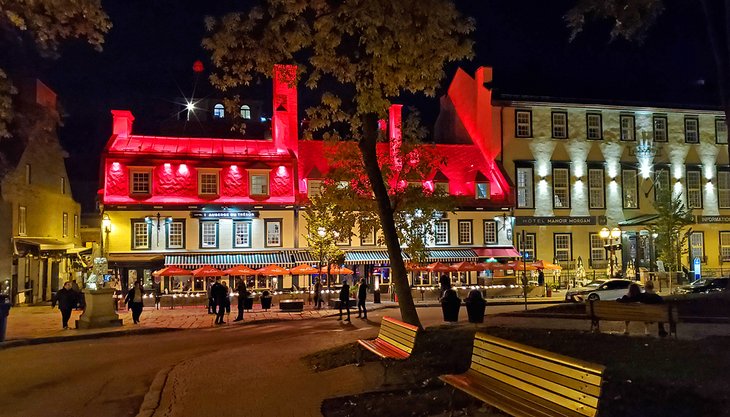
Château Frontenac is also historically significant for the Québec Conference in August 1943, where the Allied Powers - Winston Churchill, Franklin D. Roosevelt, William L. M. King, Vice-Admiral Lord Mountbatten, the U.S. Chief of Staff, General George C. Marshall, and others - laid preparations for the D-Day landings in Normandy (June 6th 1944).
Address: 1 Rue des Carrières, Québec City
Parliament Building (Hotel du Parlement) & Parliament Hill
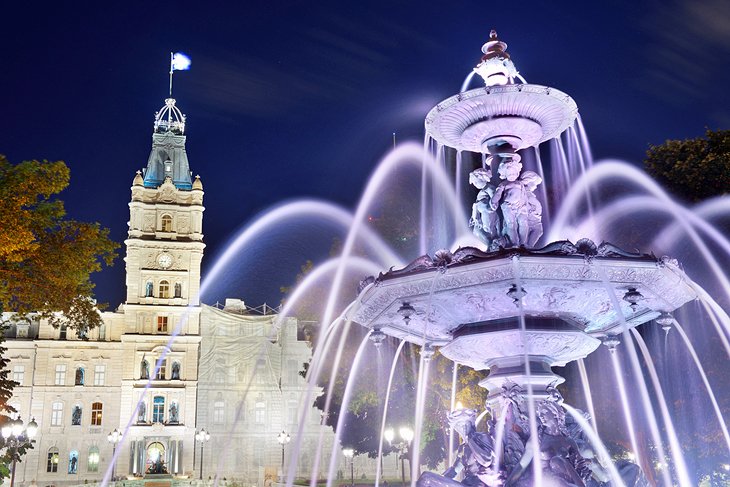
The spaciously laid out district, immediately southwest of the old Upper Town, is the seat of Québec's provincial government. The Parliament, completed in 1877 but later extended, could have been modeled on any number of Parisian public buildings. The Salle de l'Assemblée Nationale (National Assembly) and Salle du Conseil Législatif (Legislative Council) are open to the public. Both are fine old chambers, sumptuously furnished. Tickets should be obtained in advance.
Nearby, find the Grand Théâtre (a venue for plays, concerts, and symphony performances) as well as the large Palais des Congrès shopping and entertainment complex.
Address: 1045 Rue des Parlementaires, Québec City
Basilica of Sainte-Anne-de-Beaupré
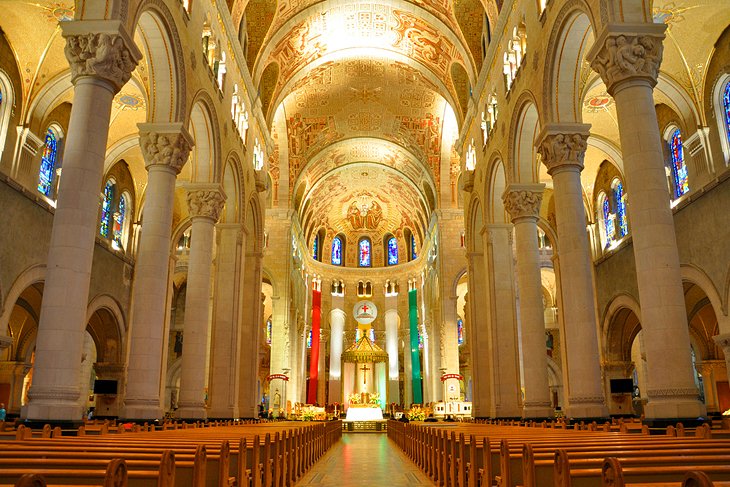
Sainte Anne is the patron saint of Québec and is credited with many miracles of healing the sick and disabled. Located northeast of Québec in Beaupre, this stunning Catholic basilica is a destination for half a million pilgrims each year. The present-day church dates to 1926, but the first chapel was built here in the 17th century.
Another famous Catholic basilica is the Cathedrale Notre-Dame-de-Quebec, designed by the architect Baillairgé and completed in 1844. The interior of Notre-Dame de Québec is very impressive with a beautiful altar, Episcopal canopy, and stained-glass windows.
Address: 10018 Chemin Royale, Sainte-Anne-de-Beaupré, Quebec City
Observatoire de la Capitale (Capital Observatory)
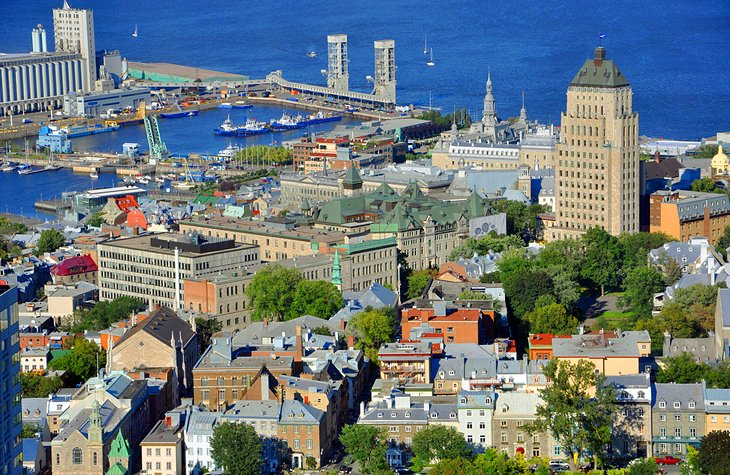
Atop the Marie-Guyart Building, this 360-degree observatory provides more than just a bird's-eye view of the city from the 31st floor. Interactive exhibits introduce how Québec City developed and grew over the centuries, with a kids-height section designed just for little ones. The panorama extends beyond the old walled city to Levis, the St. Lawrence, and Île d'Orléans.
You can also get excellent views of the city from the Funicular, Québec City's solution to its extremely hilly geography. The funicular runs from Quartier Petit-Champlain in the lower town to Château Frontenac in the upper town to save weary travelers from steep staircases. It has been transporting passengers at a staggering 45-degree angle since 1879, most recently updated in 1998 with glass-walled elevator carriages.
Address: 1037 de la Chevrotière, Québec City
Official site: http://www.observatoire-capitale.com
Fortifications of Quebec National Historic Site
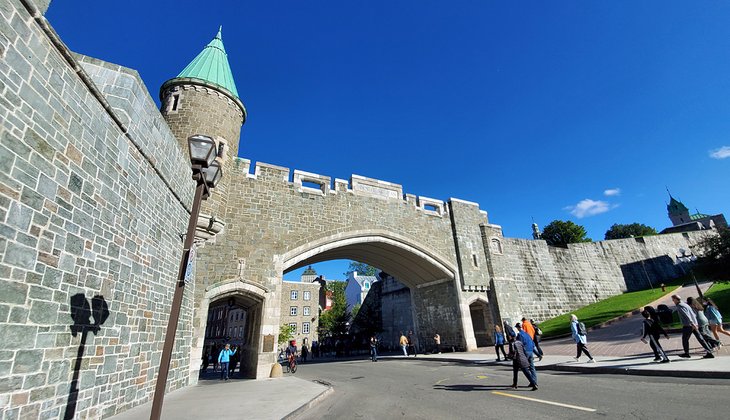
In the more than 300 years of its history, Québec has come to possess a variety of fortifications, all of which can be explored on an hour-long circular walk. The bastions, walls, towers, gates, and countless old cannons show how well the former French colony was protected. Completed in 1832, the four and a half kilometers of defensive ramparts on the west flank of the Old City were constructed of granite and sand, the only fortifications of this kind in North America. Numerous pieces of weaponry are a constant reminder of Québec's troubled past.
Old Port (Vieux Port)
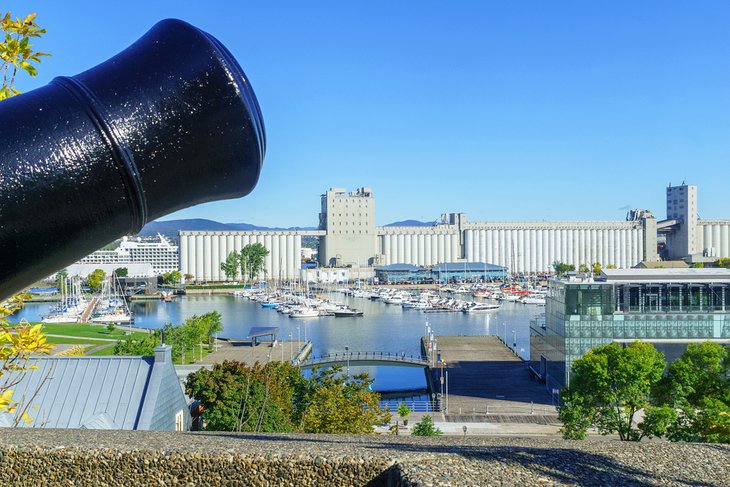
The 19th-century Old Port (Vieux Port) in Québec is a national historic site. Once the city's bustling 19th-century commercial heart, today it provides a slightly more tranquil atmosphere perfect for a scenic stroll. The waterfront promenade leads you past the picturesque Bassin Louise marina, offering views of the river and the cliffs of the Haute-Ville.
In this area, you'll find the world-class Musée de la civilisation. Just steps away, the charming Rue Saint-Paul is an interesting place for browsing antique shops and art galleries. For relaxation, the modern Place des Canotiers park provides a beautiful green space with an unbeatable vista of the Château Frontenac.
This is also the city's cruise ship gateway, and it often hosts summer festivals.
Québec-Levis Ferry
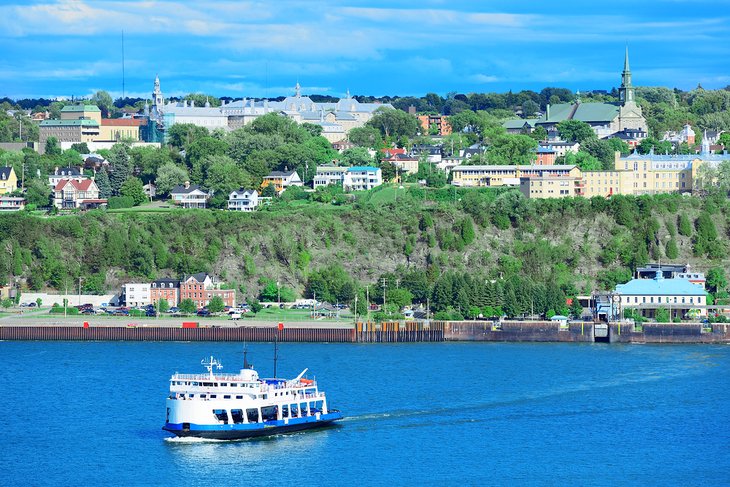
This ferry service provides a practical connection between Québec City and Levis, just across the St. Lawrence River. This quick crossing is also an inexpensive way to do some sightseeing with its views of the city skyline. If you hop aboard at dusk, you can see lights illuminate Château Frontenac, the Price Building, and other historic structures. The waterfront station is on the river in Lower Town, a short walk from Quartier Petit-Champlain and Place Royale.
Address: 10 Rue des Traversiers, Québec City
Official site: https://traversiers.com/en/our-ferries/quebec-city-levis-ferry/schedule
Grande Allée
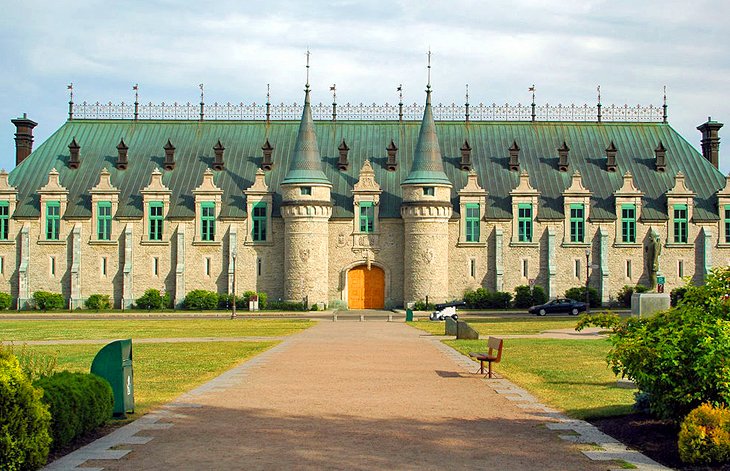
Beyond the city walls, Grande Allée forms the spine of the city. The district near Parliament Hill is of greatest interest to tourists. Here, a bevy of restaurants, patios, and entertainment venues bring local and visiting crowds. The street's grandiose 19th-century buildings were once home to the city's upper class. Other Québec City attractions on Grande Allée include the Grande Allée Drill Hall, Battlefields Park, and the Musée National des Beaux-Arts du Québec.
Carnaval de Québec
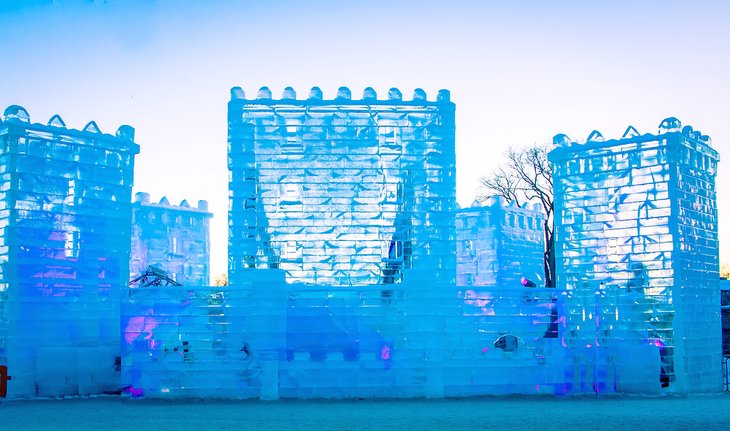
Québec's two-week winter celebration, Carnaval de Québec, is held amid the snow and ice of late January and early February. The first Carnaval was held in 1894, and since 1955, it has been an annual tradition led by a giant snowman mascot named Bonhomme Carnaval. His home base is a massive castle made of ice.
Two snow sculpting competitions, the Canadian National and International Snow Sculpting Contest, are held at the Plains of Abraham, where you can watch the artists work and admire the results as they are judged. Traditional events include dogsled races; parades; dancing; sledding; skating; and even snow swimming, where some of the city's braver residents wear only bathing suits while playing in a snow hill.
Many of the things to do here are free and open to the public, while others require the purchase of a pass that allows entry to the rest of the events.
Official site: https://carnaval.qc.ca/
Pont de Québec
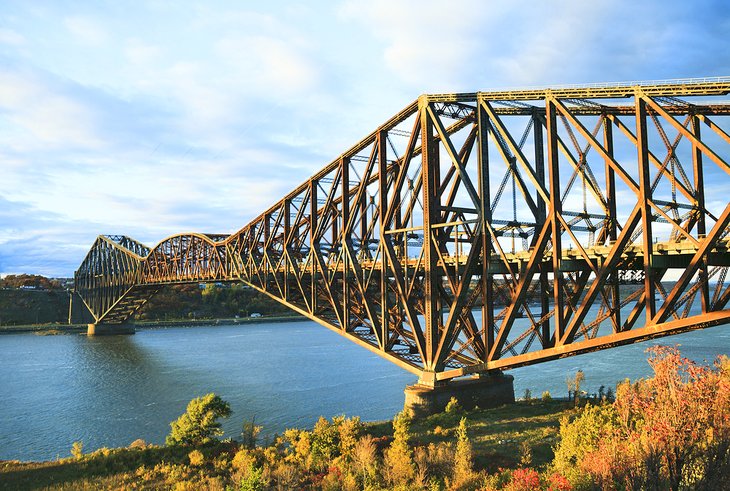
Spanning the St. Lawrence River at a slight narrows, the massive iron frame of the Pont de Québec became familiar to the world even before its completion. During construction, between 1899 and 1917, two serious accidents occurred in which more than 80 workmen lost their lives.
The Pierre Laporte Bridge twins the Pont de Québec. It is named for one of Québec's former Vice-Premier's, Pierre Laporte, who was killed during the famous October Crisis. At the time it was built, in 1970, it was the longest suspension bridge in Canada with a span of 1,040 meters.
Quebec City - Climate Chart
| Average minimum and maximum temperatures for Quebec City in °C | |||||||||||
| J | F | M | A | M | J | J | A | S | O | N | D |
| -8 -17 | -6 -16 | 0 -9 | 8 -2 | 17 5 | 22 10 | 25 13 | 23 12 | 18 7 | 11 2 | 3 -4 | -5 -13 |
| PlanetWare.com | |||||||||||
| Average monthly precipitation totals for Quebec City in mm. | |||||||||||
| 89 | 74 | 86 | 76 | 99 | 109 | 119 | 119 | 125 | 97 | 107 | 109 |
| Average monthly snowfall totals for Quebec City in cm. | |||||||||||
| 78 | 65 | 51 | 19 | 1 | 0 | 0 | 0 | 0 | 3 | 38 | 82 |
| Average minimum and maximum temperatures for Quebec City in °F | |||||||||||
| J | F | M | A | M | J | J | A | S | O | N | D |
| 18 1 | 21 3 | 32 15 | 46 29 | 62 41 | 72 51 | 77 56 | 74 54 | 64 45 | 52 36 | 37 25 | 23 8 |
| PlanetWare.com | |||||||||||
| Average monthly precipitation totals for Quebec City in inches. | |||||||||||
| 3.5 | 2.9 | 3.4 | 3.0 | 3.9 | 4.3 | 4.7 | 4.7 | 4.9 | 3.8 | 4.2 | 4.3 |
| Average monthly snowfall totals for Quebec City in inches. | |||||||||||
| 31 | 26 | 20 | 7.6 | 0.4 | 0 | 0 | 0 | 0 | 1.3 | 15 | 32 |
